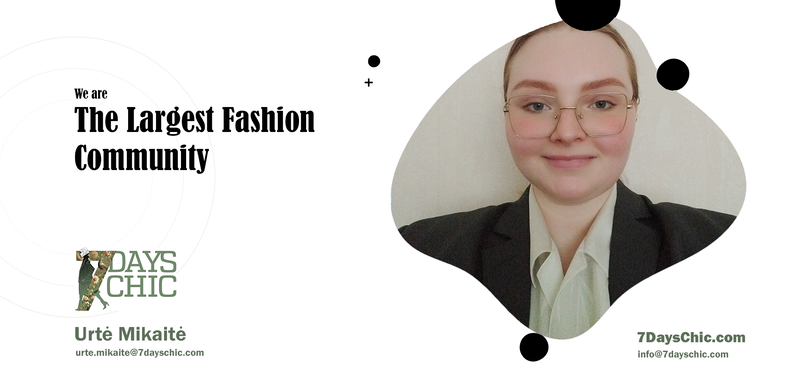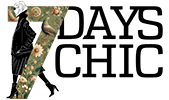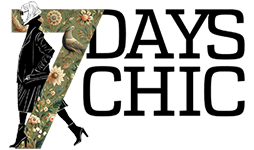11. Working for a Brand vs. Starting Your Own
Working for a brand and starting your own business are two distinct paths with their own advantages and challenges.
When you work for a brand, you become part of an established organization with clear roles and responsibilities. You benefit from stability, a steady paycheck, benefits like health insurance, and the support of the company’s resources. However, your creativity and decision-making are often limited to the company’s framework, and your career progression is structured within that system.
In contrast, starting your own business gives you complete autonomy and control over your vision and decisions. You can shape your brand, set your goals, and have the freedom to experiment and innovate. However, this comes with significant responsibility. You’re in charge of everything—finances, operations, marketing—and the financial risk is entirely yours.
Pros and Cons of Working for an Established Brand
Choosing to work for an established fashion brand can provide valuable experience, stability, and networking opportunities. However, it also comes with challenges, including creative limitations and a structured work environment. Here is a breakdown of the pros and cons:
Pros
- Learning from Industry Experts – Working alongside experienced designers, merchandisers, and business professionals allows you to develop essential skills and gain deep industry insights.
- Job Stability and Financial Security – Established brands often offer competitive salaries, benefits, and career advancement opportunities, providing financial stability compared to freelance or startup ventures.
- Access to Resources and Technology – Large fashion houses have access to high-quality fabrics, advanced production techniques, and cutting-edge technology, allowing designers to work at a high level.
- Networking Opportunities – Being part of a recognized brand helps you build relationships with suppliers, manufacturers, and other fashion professionals, opening doors to future opportunities.
- Stronger Portfolio and Credibility – Having a well-known brand on your resume can enhance your credibility and make it easier to transition into other roles or start your own brand in the future.
Cons
- Limited Creative Freedom – Designers often have to follow the brand’s established aesthetic and guidelines, which may restrict personal creativity and artistic expression.
- High-Pressure Environment – Established brands operate on tight schedules with strict deadlines, requiring designers to work long hours, especially during fashion weeks and major collection launches.
- Corporate Hierarchies – Advancement within a large fashion house can take time due to structured management and competition among employees. It may be challenging to stand out and move up the ranks quickly.
- Less Control Over the Final Product – Designers in big brands typically work in teams, meaning their input may be limited, and final decisions are often made by creative directors or executives.
- Risk of Burnout – Fast-paced work environments, high expectations, and constant trend changes can lead to stress and burnout over time.
Learning from Industry Experts
Gaining insights from industry experts is essential for growth in fashion. Experts provide practical knowledge, mentorship, and industry trends that can’t always be learned in school.
Ways to learn include:
- Networking at fashion events, trade shows, and conferences.
- Internships and apprenticeships with established designers or brands.
- Masterclasses and workshops led by professionals.
- Following experts on social media, podcasts, and industry publications.
Learning directly from professionals helps refine skills, build connections, and stay updated on evolving fashion trends and business strategies.
Stability and Financial Security
Working for an established fashion brand provides a level of stability and financial security that is often difficult to achieve in freelance or startup roles. Large companies have structured operations, reliable revenue streams, and established customer bases, which allow them to offer consistent employment and financial benefits.
Job Stability
Established fashion brands have a steady presence in the market, reducing the risks of sudden job loss compared to startups or independent design ventures. Employees benefit from long-term career opportunities, structured job roles, and the ability to grow within the company.
Consistent Income and Benefits
Unlike freelance work or starting a personal fashion line, working for a recognized brand provides a regular salary, making financial planning easier. Many brands also offer additional benefits such as health insurance, retirement plans, paid time off, and employee discounts, adding to overall financial security.
Career Growth and Professional Development
Established brands often invest in employee training, mentorship programs, and skill development. Designers have opportunities for promotions, salary increases, and lateral career moves within the company, ensuring long-term career progression.
While working for an established brand offers stability and financial security, it may come with trade-offs such as limited creative freedom and corporate structures. However, for designers seeking reliability and growth, it remains a strong career choice.
Starting Your Own Fashion Brand
Starting your own fashion brand means creating and managing a clothing or accessories line under your unique vision. It involves more than just designing—it requires business strategy, marketing, and production planning.
Steps to Launch a Fashion Startup
Starting a fashion brand requires a combination of creativity, strategic planning, and business acumen. Here are the key steps to successfully launch a fashion startup:
1. Define Your Brand Concept
- Identify your niche (e.g., sustainable fashion, streetwear, luxury apparel).
- Develop a unique brand identity, including your brand name, logo, and mission.
- Research your target market to understand customer needs and preferences.
2. Create a Business Plan
- Outline your brand’s vision, goals, and strategies.
- Define your product line, pricing structure, and sales channels.
- Set a budget, financial projections, and funding requirements.
3. Secure Funding
- Use personal savings, small business loans, or crowdfunding.
- Seek investors or fashion industry grants to support production costs.
- Manage finances wisely to sustain operations in the early stages.
4. Design and Develop Your Products
- Sketch initial designs and create prototypes.
- Select high-quality fabrics and materials that align with your brand’s vision.
- Work with manufacturers or artisans to produce samples.
5. Build a Supply Chain and Production Process
- Find reliable suppliers and manufacturers that fit your budget and quality standards.
- Establish a streamlined production schedule to meet demand.
- Consider ethical and sustainable sourcing practices.
6. Develop a Strong Brand Identity and Marketing Strategy
- Create a compelling brand story and messaging.
- Build a professional website and establish social media presence.
- Use digital marketing, influencer collaborations, and PR strategies to gain visibility.
7. Set Up Sales Channels
- Launch an online store using platforms like Shopify, Etsy, or a custom website.
- Partner with retailers, boutiques, or pop-up shops to expand reach.
- Explore direct-to-consumer (DTC) sales for higher profit margins.
8. Launch Your Brand
- Plan a launch event or online campaign to introduce your brand.
- Offer exclusive discounts, giveaways, or limited-edition items to attract customers.
- Gather customer feedback to improve future collections.
9. Manage Operations and Scale Your Business
- Monitor sales performance and customer satisfaction.
- Adjust production, marketing, and pricing strategies based on market trends.
- Expand product offerings or enter new markets as your brand grows.
Funding and Legal Considerations
Starting a fashion brand requires both financial planning and legal compliance to ensure a strong foundation.
Funding Options:
- Self-Funding: Personal savings or family investment.
- Small Business Loans: Bank loans or microfinance programs.
- Grants & Competitions: Government grants or fashion entrepreneurship contests.
- Crowdfunding: Platforms like Kickstarter and GoFundMe.
- Investors: Angel investors or venture capital for scalable brands.
Legal Considerations:
- Business Registration: Choose a business structure (LLC, sole proprietorship, corporation).
- Trademarks & Copyrights: Protect your brand name, logo, and designs.
- Contracts & Agreements: Secure vendor contracts, manufacturer agreements, and employee policies.
- Compliance & Sustainability: Follow ethical labor laws, sustainability regulations, and tax requirements.
12. Overcoming Challenges in Fashion Design
To overcome challenges means to face and successfully deal with difficult situations, obstacles, or setbacks. It involves finding ways to push through adversity by applying effort, creativity, problem-solving, and perseverance. Overcoming challenges often requires adapting to changing circumstances, learning from mistakes, and staying motivated even when progress seems slow. The process of overcoming challenges helps build resilience and personal growth, allowing individuals to become stronger, more capable, and better equipped to handle future difficulties. Essentially, it’s about finding solutions and not giving up when faced with hardships.
Handling Rejection and Criticism
Handling rejection and criticism is a big part as a beginner in this industry. Most people are giving feedback for you to improve and better yourself. How to improve? It’s easy, listen carefully to the feedback and take it into consideration, think about them, if it’s a thing that changes your style maybe don’t change anything, if it’s about your portfolio or your answers see how you can improve them.
Also there will be people that try to bring you down, don’t let them. There’s always going to be someone jealous or entitled that tries to make you lose confidence and make you fail, don’t let it get to you rise high and keep moving.
How to Improve from Feedback
1. Keep an Open Mind
- Approach feedback with a willingness to learn rather than as criticism.
- Separate personal feelings from professional growth to maintain a positive mindset.
- Recognize that even experienced designers constantly evolve based on industry and consumer input.
2. Identify Patterns in Feedback
- If multiple people mention the same issue (e.g., fabric choice, fit, or branding), take it seriously.
- Differentiate between subjective opinions and constructive critiques that can enhance your work.
3. Ask for Specific Details
- If feedback is vague, request clarification to understand exactly what needs improvement.
- Questions like “What could make this design more functional?” or “How can I improve my garment construction?” can provide valuable insights.
4. Apply Feedback in Iterations
- Make small adjustments and test different approaches before finalizing designs.
- Create multiple variations of a design to compare how different changes impact the final product.
5. Learn from Industry Experts
- Study successful designers who have adapted their styles over time based on feedback and trends.
- Attend workshops, mentorship programs, or portfolio reviews to receive professional critiques.
6. Balance Feedback with Your Vision
- Not all feedback needs to be implemented—ensure changes still align with your design identity.
- Find a balance between staying true to your aesthetic and meeting market demands.
7. Use Feedback to Strengthen Your Portfolio
- Revise past work to reflect improvements based on feedback received.
- Highlight changes by showing “before and after” versions to demonstrate growth.
8. Continuously Seek Improvement
- Regularly ask for feedback from peers, clients, and professionals in the industry.
- Stay updated with trends, techniques, and materials to refine your craft.
Embracing feedback as a learning tool rather than criticism will help you grow as a designer, improve your designs, and succeed in the competitive fashion industry.
Staying Resilient in a Competitive Industry
The fashion industry is fast-paced and highly competitive, requiring resilience to overcome challenges and stay motivated.
1. Develop a Strong Mindset
- Embrace setbacks as learning experiences.
- Stay adaptable to industry changes and trends.
- Focus on long-term goals rather than short-term failures.
2. Keep Improving Your Skills
- Stay updated with new design techniques and technologies.
- Take courses, attend workshops, and seek mentorship.
- Learn business, marketing, and branding strategies.
3. Build a Support Network
- Connect with industry professionals, mentors, and fellow designers.
- Join fashion communities and networking events.
- Seek collaborations to grow your brand and experience.
4. Stay True to Your Vision
- Define your unique style and brand identity.
- Avoid chasing trends just to fit in—focus on authenticity.
- Balance creativity with business strategy for long-term success.
5. Manage Stress & Stay Motivated
- Set realistic goals and celebrate small achievements.
- Take breaks to avoid burnout.
- Stay passionate and remind yourself why you started.
Time Management and Deadlines
In the fashion industry there are many deadlines for projects, fashion weeks, magazines and other projects. Most likely you will be in several projects at the same time. Here are so tims for time management and meeting deadlines:
- Prioritize Tasks – Identify urgent and important tasks using a to-do list or planner.
- Set Realistic Deadlines – Break projects into smaller tasks with achievable deadlines.
- Use a Calendar – Schedule fittings, fabric sourcing, and production deadlines in advance.
- Avoid Procrastination – Start early and allocate time for unexpected delays.
- Time Block Your Work – Dedicate specific time slots for sketching, sewing, and business tasks.
- Minimize Distractions – Work in a quiet space and limit social media usage during creative sessions.
- Stay Organized – Keep digital and physical files of designs, invoices, and materials well-sorted.
- Outsource When Needed – Delegate tasks like pattern-making or marketing to focus on design.
- Regularly Review Progress – Check milestones weekly to stay on track.
- Take Breaks – Avoid burnout by stepping away from work to refresh creativity.
Managing Multiple Projects
Balancing multiple projects requires strong organization, time management, and focus. Here’s how to stay on top of everything:
1. Prioritize & Plan
- List all projects and rank them by urgency and importance.
- Break down each project into small, actionable tasks.
- Use a calendar or project management tool (Trello, Asana, Notion) to track deadlines.
2. Set Clear Goals & Deadlines
- Assign specific milestones and deadlines for each project.
- Be realistic about how much time each task requires.
3. Time Management Techniques
- Use the Pomodoro Technique (work in focused sprints with short breaks).
- Batch similar tasks together to increase efficiency.
- Set boundaries and avoid multitasking to maintain quality.
4. Delegate & Collaborate
- Assign tasks to team members when possible.
- Communicate clearly and check in regularly on progress.
5. Stay Organized & Review Progress
- Keep all project-related files, notes, and communications in one place.
- Regularly review progress and adjust plans as needed.
Dealing with Creative Blocks
Creative block can be frustrating, but it’s a normal challenge for designers. Here are effective ways to regain inspiration and boost creativity:
1. Step Away and Take a Break
- Sometimes, forcing creativity can make the block worse. Step away from your work, go for a walk, or engage in a different activity to refresh your mind.
2. Seek Inspiration
- Explore fashion archives, museums, or nature for fresh ideas.
- Follow designers, artists, or cultural trends that spark creativity.
3. Experiment with New Materials or Techniques
- Work with unfamiliar fabrics, colors, or silhouettes to push boundaries.
- Try hand-drawing instead of digital sketching (or vice versa) for a new approach.
4. Work on a Different Project
- Shift your focus to another design or task, such as organizing your portfolio or researching trends.
- Sometimes, working on something unrelated allows creativity to flow naturally.
5. Collaborate with Others
- Discuss ideas with fellow designers, stylists, or artists.
- A fresh perspective can lead to unexpected and innovative solutions.
6. Keep a Fashion Journal
- Document sketches, ideas, and inspirations daily, even if they seem unpolished.
- Looking back at past concepts may spark a new direction.
7. Follow a Creative Routine
- Set a specific time each day for brainstorming and sketching.
- Consistency can train your mind to overcome creative slumps.
8. Limit Overthinking and Perfectionism
- Allow yourself to create without judgment. Rough sketches and imperfect ideas often lead to breakthroughs.
9. Change Your Environment
- Work in a new space, visit a café, or rearrange your workspace to stimulate creativity.
10. Stay Inspired by Fashion Trends and History
- Research vintage fashion, cultural attire, or emerging designers for unique ideas.
- Trend forecasting reports and fashion week collections can provide insight into new styles.
Continue Reading:
How to Become a Fashion Designer? / Part 1
How to Become a Fashion Designer? / Part 2
How to Become a Fashion Designer? / Part 3
How to Become a Fashion Designer? / Part 4
How to Become a Fashion Designer? / Part 5
How to Become a Fashion Designer? / Part 6
How to Become a Fashion Designer? / Part 7
Written by Urtė Mikaitė




Add a Comment